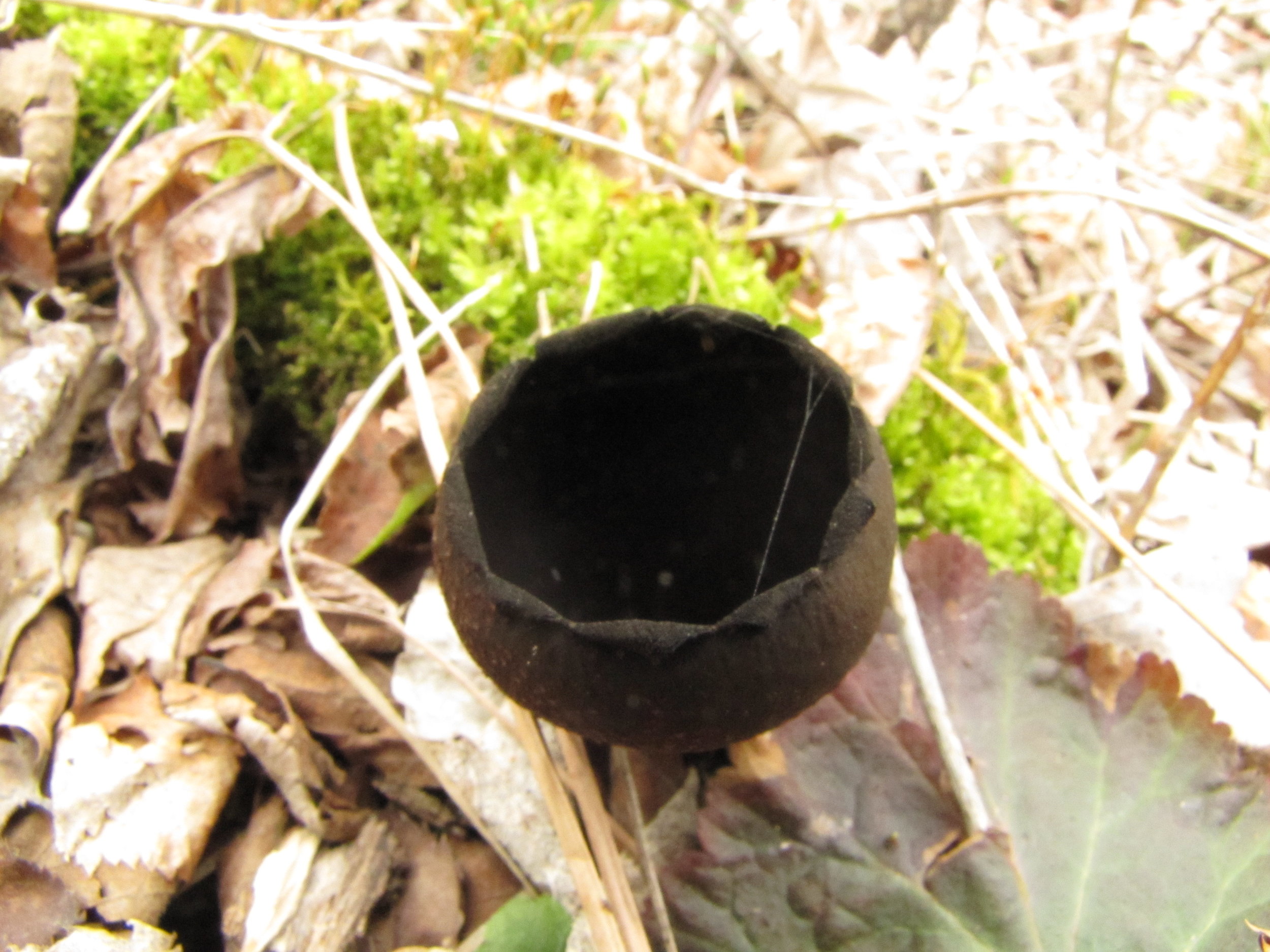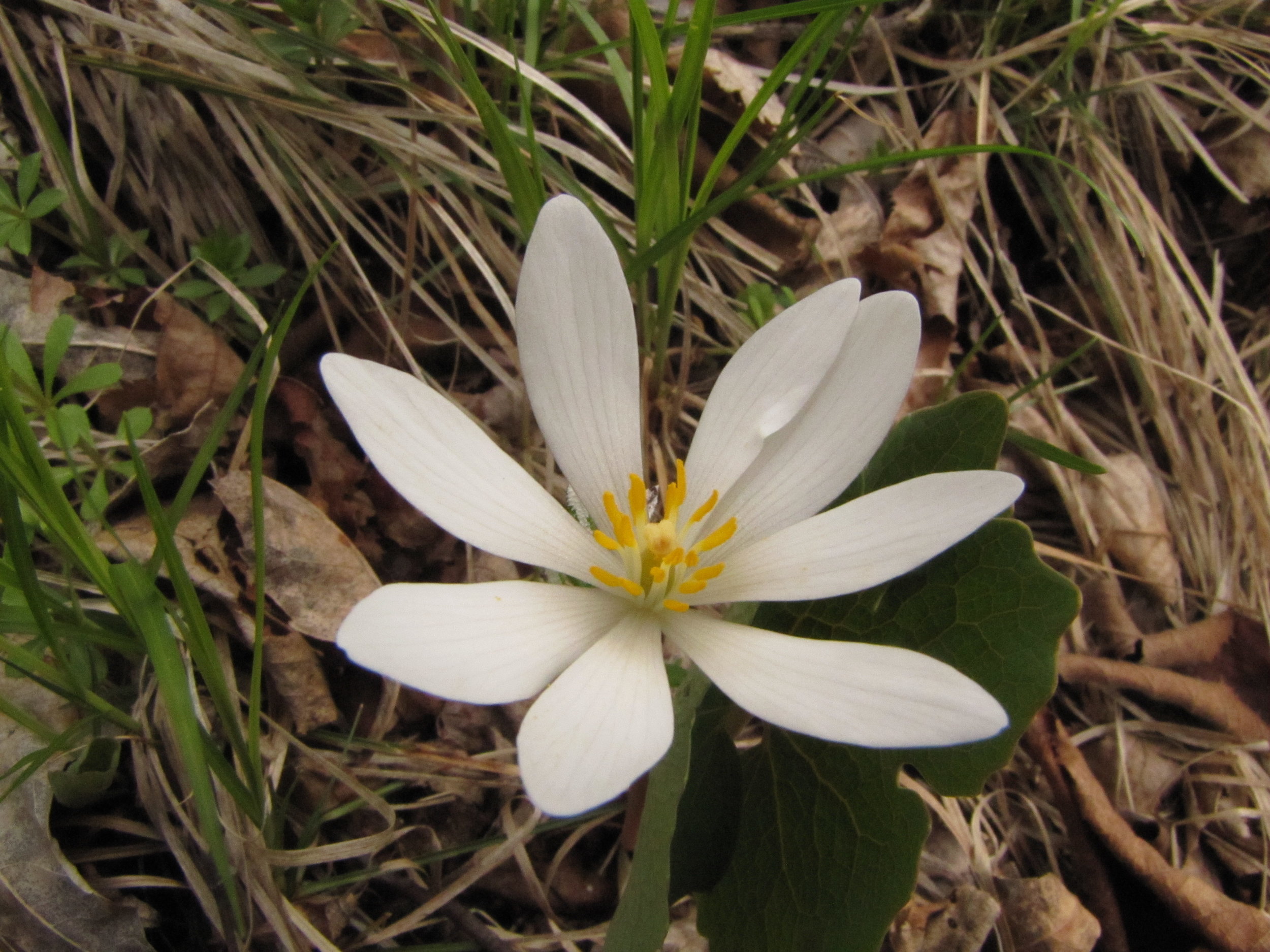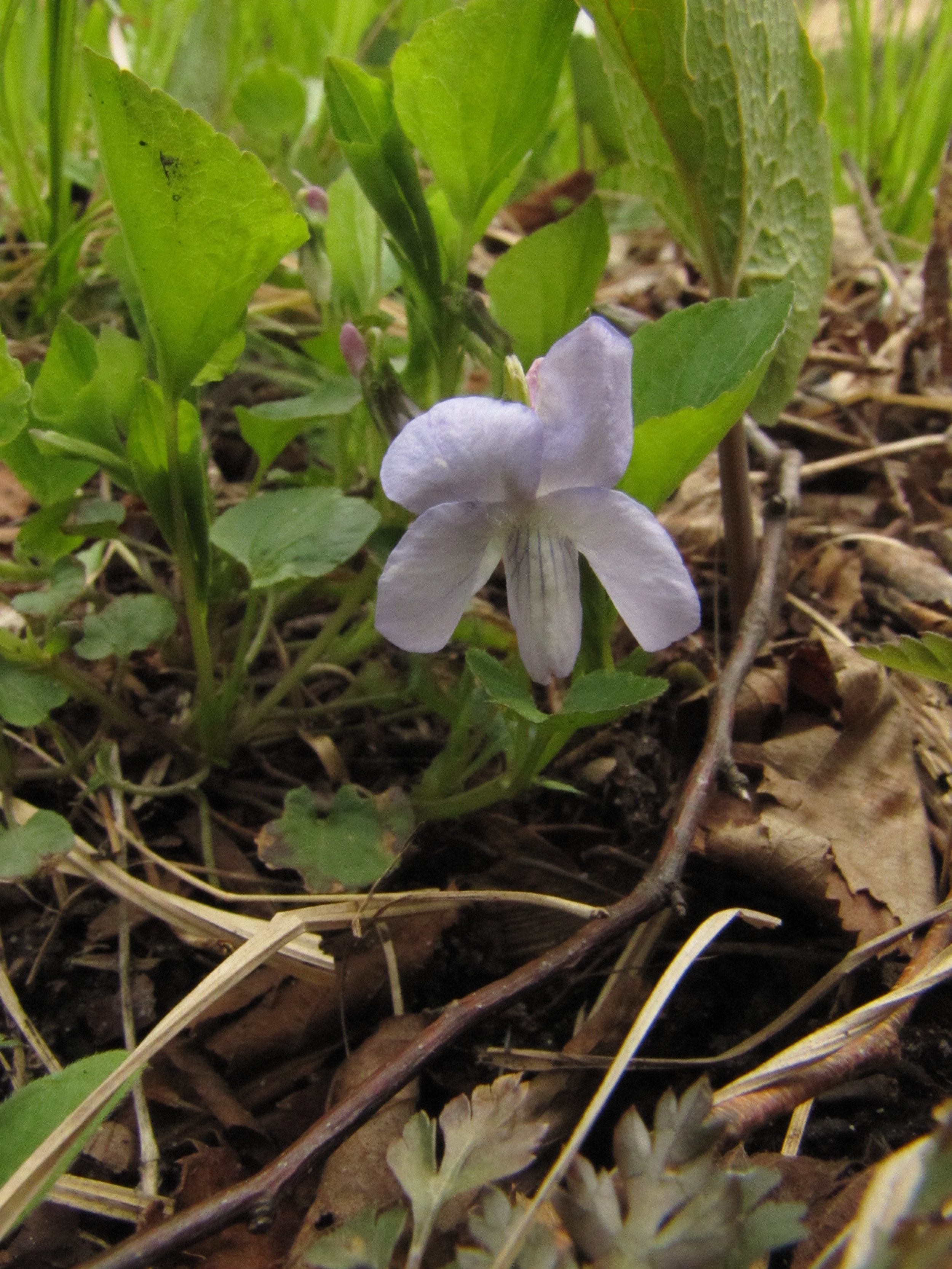I was escorted on my walk by a flock of yellow-rumped warblers, commonly known as "butterbutts". One of the first warblers to return, their sheer numbers can be overwhelming, popping out of the bushes and hanging on the branches. Never still, always searching for insects, they can distract one from the other sights at hand. Persistence pays off as I spot one orange crowned warbler in their midst. Not as exciting as they sound, their orange crown is almost never visible and they are known for being the plainest warbler. Other things flying were butterflies, too quick to ID, also in search of a meal.
Back to the ground and foliage, I found myself in a sea of bloodroots. quick to bloom and quick to fade. Hidden among them, a couple of Dog Violets! Pale compared to later bloomers, still a sight for winter worn eyes.
While checking for ferns, I spotted a couple of Devil's Urns. The Latin name is Urnula craterium. These leather like urn shaped fungi are some of the first to pop out in the spring. They form on downed deciduous wood.
Big things catch my eyes too. A birch with a diameter of 19.1 inches and a Willow with a 29.6 diameter, both are in the running for largest on the land.
So much to see, and it is all just starting!










